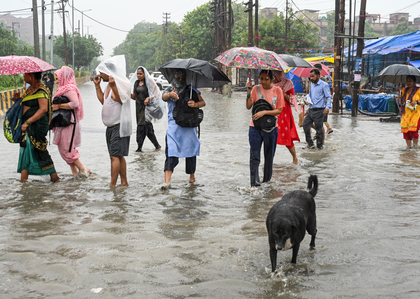Monsoons driving preventable Hepatitis A and E cases in Delhi: Experts
By IANS | Updated: July 28, 2025 17:24 IST2025-07-28T17:18:58+5:302025-07-28T17:24:45+5:30
New Delhi, July 28 With the monsoon in full swing, the Delhi-NCR region is witnessing a worrying rise ...

Monsoons driving preventable Hepatitis A and E cases in Delhi: Experts
New Delhi, July 28 With the monsoon in full swing, the Delhi-NCR region is witnessing a worrying rise in the number of preventable Hepatitis A and E cases, said experts on Monday, stressing the need for more awareness on vaccinations.
Both Hepatitis A and E viruses, which are transmitted through contaminated food and water, tend to see seasonal spikes during the monsoon due to poor sanitation, waterlogging, and compromised hygiene standards.
Children, pregnant women, and those with pre-existing liver conditions are the most vulnerable to the infections.
“Some city hospitals are seeing up to a 40 per cent increase in acute hepatitis cases, while others reported a sharp rise in OPD consultations for jaundice, abdominal pain, and vomiting -- classic symptoms of Hepatitis A and E,” said Dr. Abhideep Chaudhary, President-Elect of the Liver Transplantation Society of India (LTSI).
Chaudhary noted that many patients are unaware of the need for hepatitis vaccination.
“Hepatitis A and E are largely preventable diseases, yet we see a surge every monsoon due to poor awareness and unsafe water consumption. Hepatitis E can be fatal in pregnant women and can lead to acute liver failure in those with underlying liver disease. In some cases, acute Hepatitis A can lead to severe liver failure requiring a liver transplant," he added.
According to estimates from the LTSI, more than 70 per cent of waterborne hepatitis cases in India during the monsoon are attributable to Hepatitis E, while Hepatitis A remains highly prevalent among children under 15.
“Cases of hepatitis A and E have gone up 30-40 per cent as compared to last month. We are witnessing a seasonal epidemic that repeats every year, and yet we are caught off guard every time. These infections are entirely preventable with clean drinking water, proper food handling, and vaccination in high-risk groups,” said Dr. Sanjiv Saigal, President, LTSI.
Health experts emphasised that while Hepatitis B and C get more attention due to their chronic and long-term liver damage, Hepatitis A and E pose an equally serious threat in the short term, especially during monsoons.
The symptoms -- ranging from fatigue and nausea to jaundice and dark urine -- are often ignored until the infection has progressed significantly.
The World Health Organization (WHO) estimates that Hepatitis E causes up to 20 million infections globally every year, with India contributing a significant proportion due to seasonal outbreaks.
In urban settings like Delhi, the mix of rapid urbanisation, aging water infrastructure, and irregular monitoring of food vendors creates a breeding ground for viral outbreaks.
Disclaimer: This post has been auto-published from an agency feed without any modifications to the text and has not been reviewed by an editor
Open in app